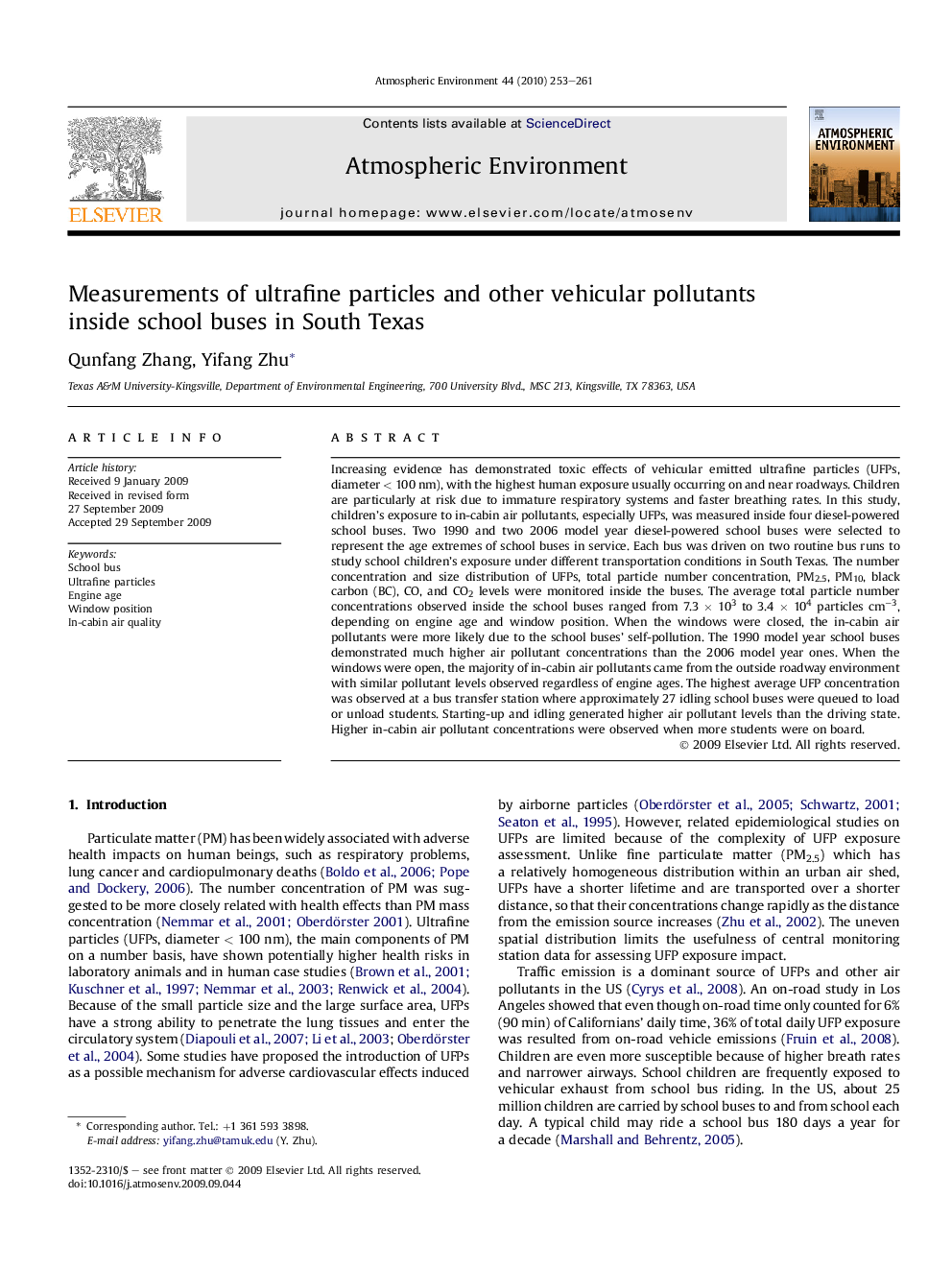| Article ID | Journal | Published Year | Pages | File Type |
|---|---|---|---|---|
| 4441190 | Atmospheric Environment | 2010 | 9 Pages |
Increasing evidence has demonstrated toxic effects of vehicular emitted ultrafine particles (UFPs, diameter < 100 nm), with the highest human exposure usually occurring on and near roadways. Children are particularly at risk due to immature respiratory systems and faster breathing rates. In this study, children’s exposure to in-cabin air pollutants, especially UFPs, was measured inside four diesel-powered school buses. Two 1990 and two 2006 model year diesel-powered school buses were selected to represent the age extremes of school buses in service. Each bus was driven on two routine bus runs to study school children’s exposure under different transportation conditions in South Texas. The number concentration and size distribution of UFPs, total particle number concentration, PM2.5, PM10, black carbon (BC), CO, and CO2 levels were monitored inside the buses. The average total particle number concentrations observed inside the school buses ranged from 7.3 × 103 to 3.4 × 104 particles cm−3, depending on engine age and window position. When the windows were closed, the in-cabin air pollutants were more likely due to the school buses’ self-pollution. The 1990 model year school buses demonstrated much higher air pollutant concentrations than the 2006 model year ones. When the windows were open, the majority of in-cabin air pollutants came from the outside roadway environment with similar pollutant levels observed regardless of engine ages. The highest average UFP concentration was observed at a bus transfer station where approximately 27 idling school buses were queued to load or unload students. Starting-up and idling generated higher air pollutant levels than the driving state. Higher in-cabin air pollutant concentrations were observed when more students were on board.
